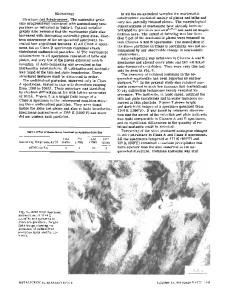Correlation of Local Constitutive Properties to Global Mechanical Performance of Advanced High-Strength Steel Spot Welds
- PDF / 8,037,054 Bytes
- 13 Pages / 593.972 x 792 pts Page_size
- 99 Downloads / 345 Views
DUCTION
RECENT results from researchers have shown that spot welds in dual-phase and martensitic advanced high-strength steels exhibit softening and hardening in their heat-affected zone. These phenomena are found to be a function of martensite fraction and carbon content.[1,2] Results from mechanical testing on tension-shear and cross-tension welded samples with different nugget diameters (ND) show nonlinear relationship between the strength of base metal (BM) and maximum load from tension-shear and cross-tension
H. REZAYAT is with the Mechanical, Aerospace and Biomedical Engineering, University of Tennessee, Knoxville, TN. Contact e-mail: [email protected] H. GHASSEMI-ARMAKI and S. SRIRAM are with the Automotive Product Research, ArcelorMittal Global R&D, East Chicago, IN. S.S. BABU is with the Mechanical, Aerospace and Biomedical Engineering, University of Tennessee and also with the Manufacturing Demonstration Facility, Oak Ridge National Laboratory, Oak Ridge, TN. Manuscript submitted July 10, 2019.
METALLURGICAL AND MATERIALS TRANSACTIONS A
spot welds.[3,4] This nonlinearly can potentially impact the expected performance of AHSS spot welds, during the design of components with reduced weight and improved crashworthiness. With the onset of new regulations for the automotive industry on emissions, steel makers have been designing and producing a class of steels known as advanced high strength steels (AHSS) to reduce the weight and fuel consumption and increase the safety of cars. Dual-phase (DP) and Martensitic (MS) steels are among the AHSS that are widely used in manufacturing of chassis and body structure of the automobile. Resistance Spot welding (RSW) is the main joining technique in manufacturing of the components made from these steels. DP and MS steels have a ferritic-martensitic and fully martensitic microstructures, respectively. Although martensite is a hard microconstituent with high levels of tensile strength (up to about 2800 MPa), it has a metastable structure and decomposes into ferrite and carbide during RSW.[1,2,5–8] This phenomenon known as martensite tempering, occurs at temperatures below the Ae1 phase transformation temperature of steel, and has been extensively studied by several researchers, text
books and standards.[4,5,9–13] Many of the published results also show that constitutive properties of these steels may be heterogeneous within the spot welds, depending on the initial microstructure and carbon content.[1,2,4,6,12,14,15] In general, HAZ softening has been observed in both intercritical HAZ (ICHAZ) (due to formation of fresh ferrite) and subcritical HAZ (SCHAZ) (due to tempering of martensite) of resistance spot welds, made from the DP and MS advanced high strength steels, with different extents depending on the initial microstructure and chemical composition. This leads to some fundamental questions regarding the effects of these gradients on the deformation and failure behavior of the spot welds. The deformation and failure modes of the spot-welded samples had been investig
Data Loading...











